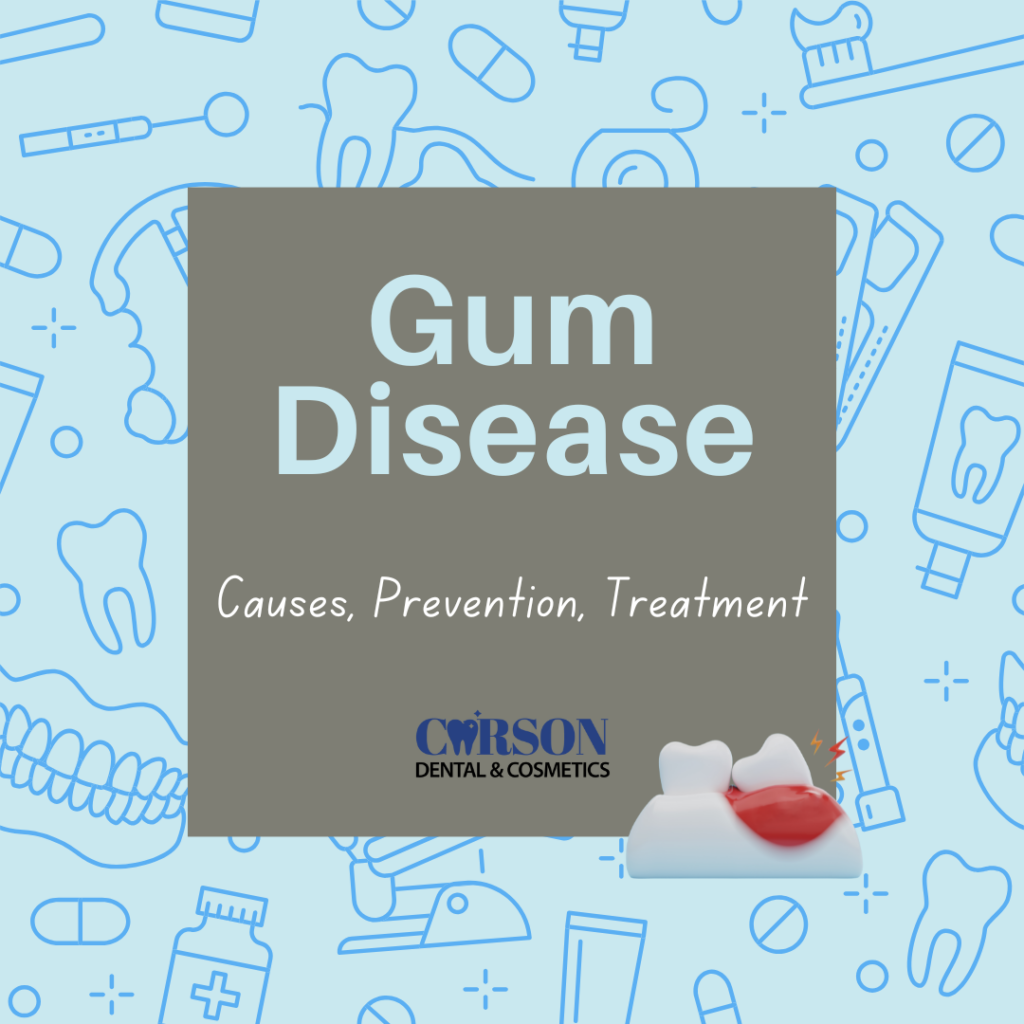Many people undervalue the significance of gum care, despite the fact that maintaining healthy gums is essential for overall oral health. If left untreated, gum disease, sometimes referred to as periodontal disease, is a common but dangerous condition that can result in tooth loss. Affecting the gum tissue and bone only, this condition requires specialized care. Our dentists in Long Beach can help diagnose and treat gum disease effectively. Let's examine gum disease's causes, signs, phases, and available treatments, highlighting the significance of prompt action. Meet Our Team Understanding Gum Disease Gum disease is an infection of the tissues that support and surround your teeth. Plaque, a sticky layer of germs that develops on teeth, is the first sign of the problem. Regular brushing and flossing removes plaque only, but if not done consistently, plaque can harden into tartar, leading to gum irritation. Symptoms to Watch For Gum disease may present with subtle early symptoms, but recognizing them promptly is crucial for effective intervention. A form of gum disease may present with the following typical signs and symptoms: Stages of Gum Disease Each stage of gum disease progression is more severe than the one before it, as recognized by the American Dental community: Causes and Risk Factors A number of factors can raise your chance of getting gum disease, affecting the structures supporting the teeth. Recognizing the warning signs early is important. These risk factors include: Prevention is Key Gum disease is far easier to prevent than to treat. In …
Many people undervalue the significance of gum care, despite the fact that maintaining healthy gums is essential for overall oral health. If left untreated, gum disease, sometimes referred to as periodontal disease, is a common but dangerous condition that can result in tooth loss.
Affecting the gum tissue and bone only, this condition requires specialized care. Our dentists in Long Beach can help diagnose and treat gum disease effectively. Let’s examine gum disease’s causes, signs, phases, and available treatments, highlighting the significance of prompt action.
Meet Our Team
Understanding Gum Disease
Gum disease is an infection of the tissues that support and surround your teeth. Plaque, a sticky layer of germs that develops on teeth, is the first sign of the problem. Regular brushing and flossing removes plaque only, but if not done consistently, plaque can harden into tartar, leading to gum irritation.
Symptoms to Watch For
Gum disease may present with subtle early symptoms, but recognizing them promptly is crucial for effective intervention. A form of gum disease may present with the following typical signs and symptoms:
- Gums that are red or swollen
- Gum bleeding when brushing and flossing
- A persistently unpleasant taste in the mouth or foul breath
- Gums that recede
- Greater distances between teeth
- Teeth that are loose
Stages of Gum Disease
Each stage of gum disease progression is more severe than the one before it, as recognized by the American Dental community:
- Gingivitis: The earliest stage, gingivitis, occurs when the gums experience mild irritation. With good oral hygiene, you can reverse the condition.
- Early Periodontitis: The tooth-supporting bone starts to become infected. Gums begin to separate from teeth, creating bacterial-collecting pockets.
- Moderate Periodontitis: Teeth may begin to feel loose, and bone loss becomes more noticeable. The recession of gums is more obvious.
- Advanced Periodontitis: There is a significant loss of bone, which can result in loose teeth and even tooth loss. Abscesses and persistent inflammation are possible outcomes.
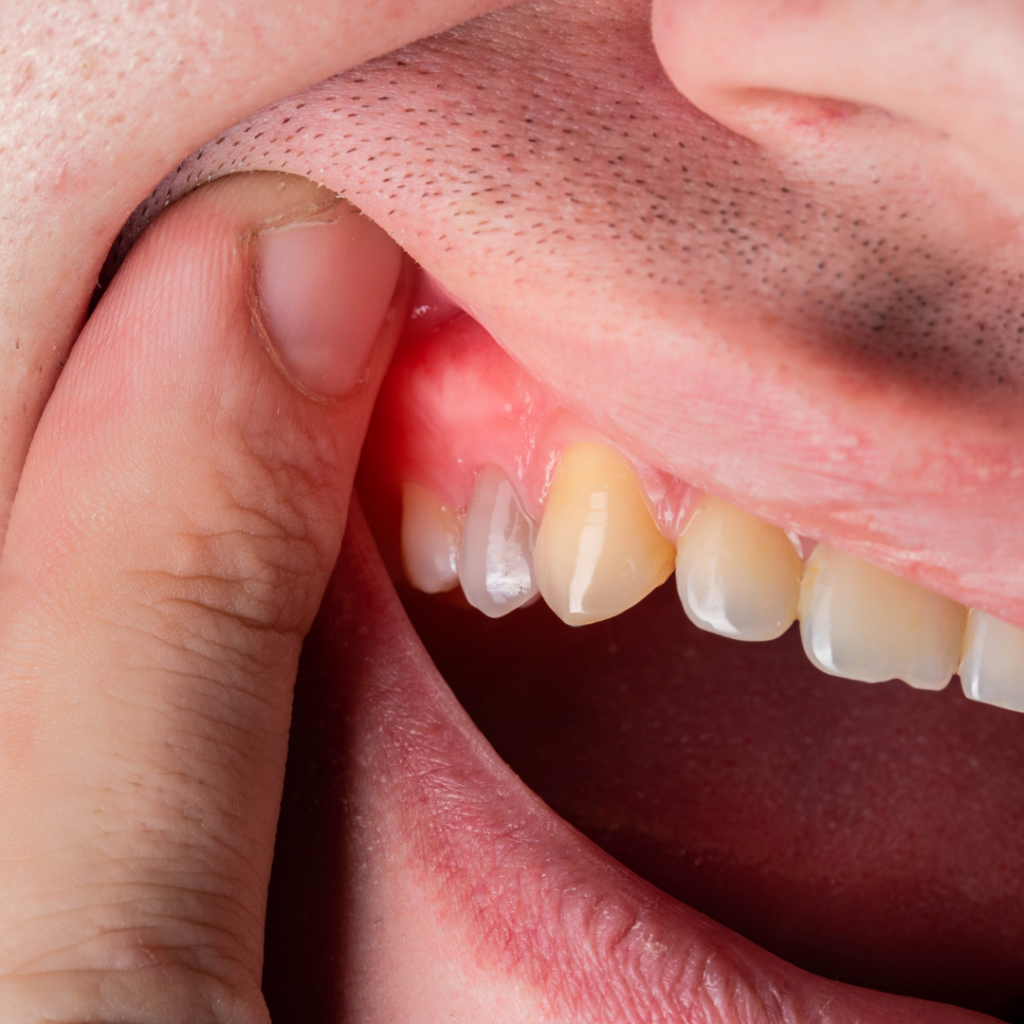
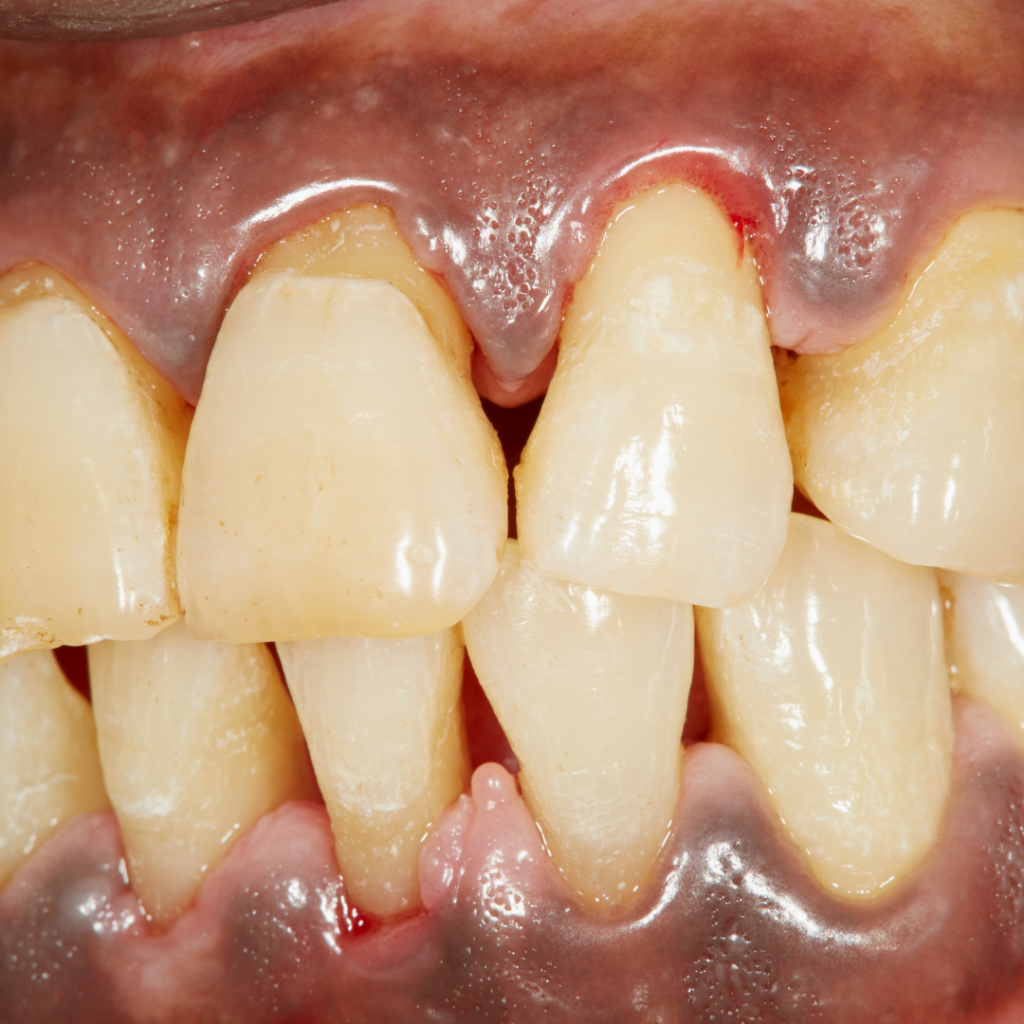
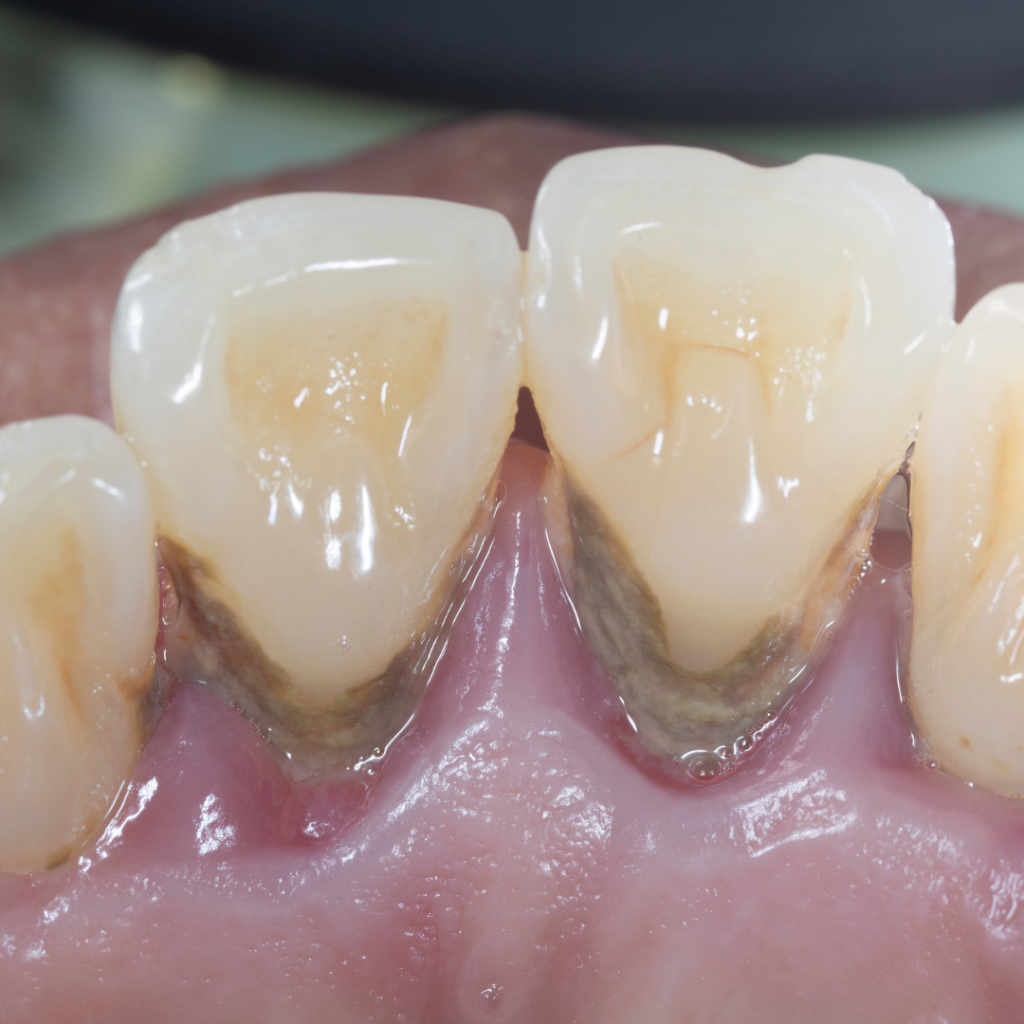
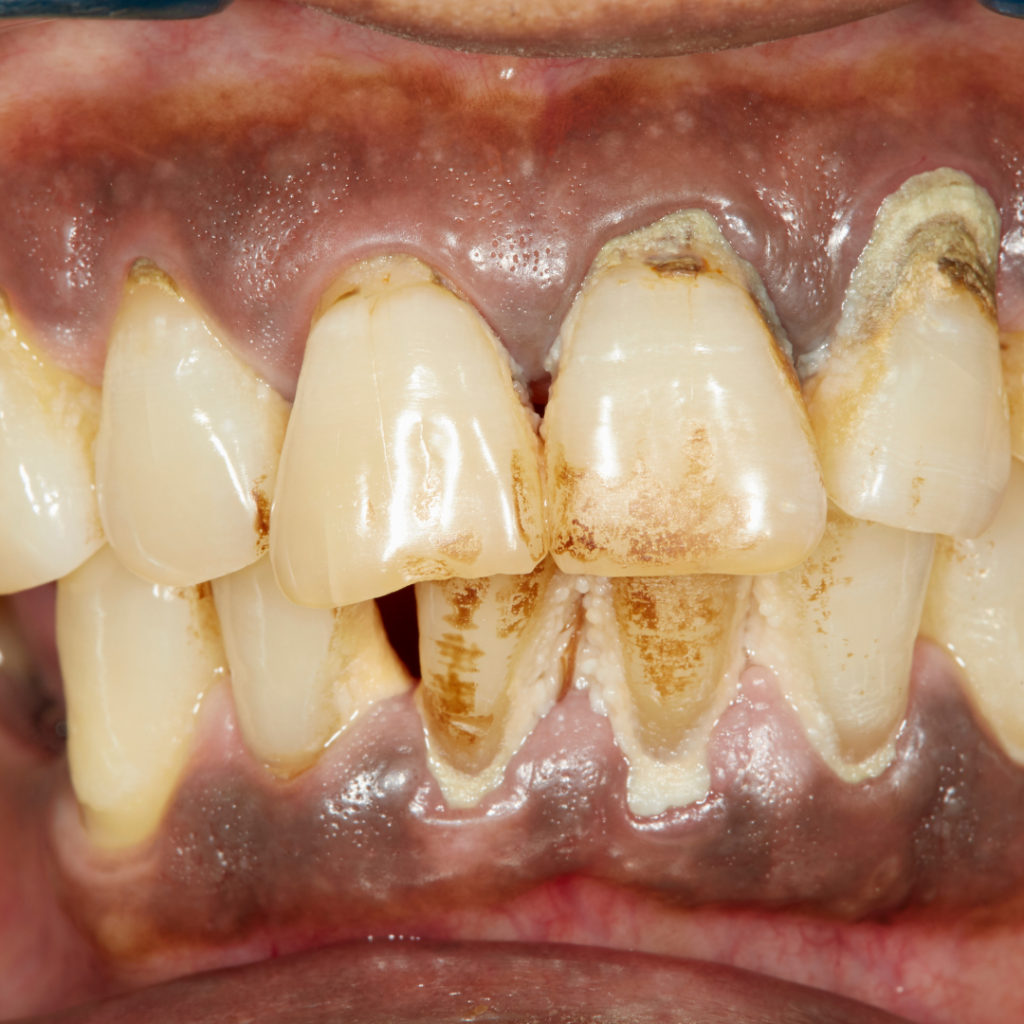
Causes and Risk Factors
A number of factors can raise your chance of getting gum disease, affecting the structures supporting the teeth. Recognizing the warning signs early is important. These risk factors include:
- Inadequate dental care
- Using tobacco products or smoking
- Hormonal shifts, such as those that occur during pregnancy
- Certain medications
- Genetic susceptibility
- Systemic illnesses, including diabetes
Prevention is Key
Gum disease is far easier to prevent than to treat. In the United States, the following are some successful preventative techniques:
- Use fluoride toothpaste to brush your teeth twice a day.
- Floss every day to remove plaque between your teeth.
- Use mouthwash that is antiseptic.
- Consume a healthy, well-balanced diet high in vitamins C and D.
- Steer clear of tobacco and drink in moderation.
- Make an appointment for routine dental examinations and cleanings.
Treatment Options
Depending on how severe your gum disease is, there are different treatment options:
Non-Surgical Treatments
- Scaling and Root Planing: This deep cleaning technique smoothes the surfaces of the roots and gets rid of plaque and tartar behind the gum line, helping to protect the soft tissue from further damage.
- Antibiotics: Antibiotics, either oral or topical, can aid in the management of bacterial infections.
Learn more about Our Periodontics
Surgical Treatments
In more complex circumstances, surgery may be necessary:
- Pocket Reduction Surgery: By narrowing the gap between the gums and the tooth, pocket reduction surgery limits the places where bacteria can hide.
- Grafts of Bone and Tissue: These operations help regenerate the bone that supports the teeth and the soft tissue lost due to periodontitis.
Learn more about Our Oral Surgery
The Importance of Early Intervention
Early detection and treatment can stop gum disease from progressing to more severe stages. Frequent dental examinations and professional cleaning make it possible to detect early indications of gum disease when it is most curable.
Remember, a healthy smile starts with healthy gums. You can preserve the health of your gums and the brightness of your smile for many years to come by practicing good oral hygiene, getting professional cleaning, and seeking help when necessary. Book an appointment for a check-up at Carson Dental & Cosmetic Centre right now to ensure your gums are in optimal condition before you start to feel uncomfortable!

